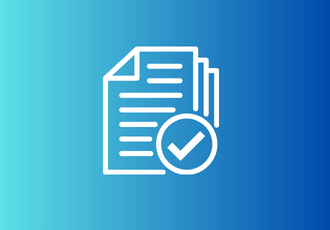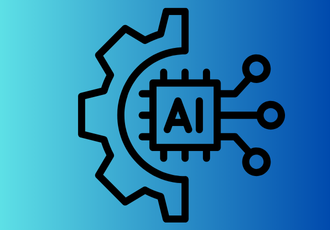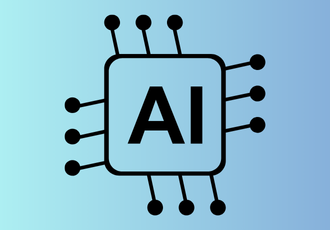The Kaizen Methodology:
Another one of the most popular business improvement methodologies is the Kaizen Methodology, a Japanese business that translates to ‘change for the better’. Its core objective is to make the work environment more efficient across all business units. The Kaizen methodology, in short, promotes the idea of continuous improvement - that a small change now can have a huge impact in the future.
Kaizen is a process improvement methodology that highlights the impact of all employees in ensuring operational efficiencies. Kaizen encourages employees to strive to improve the overall business model – no matter how small the change.
Many leading companies have employed the Kaizen methodology, perhaps most notably Toyota, a leading car manufacturer that employs Kaizen as one of its key values. In their company culture and process improvement strategy, Toyota encourages higher employee engagement in identifying areas of potential continuous improvement and actively making changes in their business plan.
There are 5 Key Steps Involved in the Kaizen Methodology:
1. Know Your Customer
Understanding the main users of a process can aid the organization in optimizing your current processes to enhance customer experience.
2. Let it Flow
This is the idea of improving processes by eliminating waste, whether it is in paper processes, time wasted, or financial waste, it is the concept that everyone in the organization should be thinking about how to reduce waste when completing a task – if something is not efficient, ask yourself ‘why is this? And how can we make it better?’
3. Go to Gemba
Gemba literally translates to ‘the real place’. It promotes the idea that the Leadership Team should have visibility over all areas of an organization to achieve total quality management.
4. Empower People
With the visibility highlighted in step 3 of the Kaizen methodology, the Leadership Team of an organization should set goals for the entire team and help them to achieve these targets.
5. Be Transparent
Data is the strongest way of measuring process success. Performance improvements must be transparent and tracked to determine if the performance initiative was successful.
Whether your organization employs the DMAIC, the Kaizen methodology, or other improvement methodologies. The principles for creating a process improvement plan and making continuous improvements remain the same:
- Assess the Improvement Methodologies and find what works for your organization
- Evaluate your existing processes, and highlight any process problems
- Identify areas for continuous improvement in a simple process to begin with
- Make impactful changes
- Review the results and performance metrics
- Ensure operational efficiency within your organization
With a no code DPA tool like FlowForma Process Automation, all employees (not just IT) will be able to make an impact on your business processes. Start your 7-day free trial to kick-start process improvement initiatives throughout your entire company.
Examples of Process Improvement
Every day our customers amaze us with their stories of continuous process improvement initiatives. I’ve picked out two examples below to highlight their successes and get your mind reeling on how to identify business process management improvement opportunities in your organization.
Process Improvement in NGO Industry: AcruxKC
-1.png?width=215&height=287&name=Untitled%20design%20(7)-1.png) A US non-profit organization in Kansas, AcruxKC helps people on low-income access basic health services, like emergency dental care and prescriptions.
A US non-profit organization in Kansas, AcruxKC helps people on low-income access basic health services, like emergency dental care and prescriptions.
Registered clients collect their vouchers from 52 sites and choose where to redeem them from 120 vendor locations… you can imagine the complications they had before making these vouchers digital.
Before implementing improvement initiatives, 20% of the vouchers went unused - “That’s thousands of dollars of care and hundreds of people who aren’t getting what they need, so we wanted to automate some reminders to them, and also streamline workflows where we can follow up and get them to use their vouchers,” says Beth Radtke, Executive Director.
Digitalizing the vouchers and creating efficient workflows using FlowForma Process Automation, AcruxKC improved the voucher scheme process to be more accessible to people who might not have money for transportation to pick up and redeem the vouchers or struggle to get time off work.
Read the full Case Study here
Process Improvement in Construction: Morgan Construction
.png?width=215&height=287&name=Untitled%20design%20(8).png) Morgan Construction’s team relied on a shared Microsoft Excel spreadsheet to manage and track the onboarding progress of employees.
Morgan Construction’s team relied on a shared Microsoft Excel spreadsheet to manage and track the onboarding progress of employees.
This method was time-consuming, susceptible to human error, and was no longer an efficient tool considering the volume of individuals that were being onboarded at a time.
Morgan Construction improved the onboarding process by using FlowForma Process Automation as a workflow solution that organized the onboarding process, reduced the likelihood of human errors, and allowed for automated, accurate progress reporting - achieving total quality management of the process.
“The digital workflow built with FlowForma has helped bring automation into the recruitment onboarding process, taking what was a giant excel spreadsheet with endless data entry that had outgrown its capabilities and combined it into a process flow that is very intuitive to use.
The business logic built into FlowForma will save time and increase data integrity because the information is only touched once. My team is very excited to have this digital workflow solution in place!” says Carolynne Herron, Director of Corporate at Morgan Construction.
Read the full Case Study here
Get inspired with more examples of our customers improving business processes in our case study library here.
What is Continuous Process Improvement and its Importance?
Of course, process improvement is advantageous for organizations dealing with issues like an abundance of manual processes, paper trails, decreased productivity, and beyond.
However, it is important to understand that business process improvement is not a one-time fix. It should be an ongoing practice of continuous improvement that reflects the state of the business, its employees, and its customers.
You may be reading this and thinking ‘All my processes are already automated, is improvement different from automation?’ The answer is yes.
Much like the weather, your processes, and your business goals will change. The purpose and importance of continuous process improvement is to ensure good housekeeping and consistent operational excellence.
Companies that regularly assess their existing processes for areas of continuous process improvement are better equipped to deal with changes in market demands than those that do not – giving them an instant competitive advantage.
Even if no flaws are identified in your evaluation, you can rest easy knowing your organization is operating on up-to-date requirements for its processes.
Identifying the Process Improvement Opportunities
There are many ways to implement continuous improvement of your processes and deliver quick wins to your organization.
1. Removing Manual Tasks
Removing paper, excel, and emails to streamline processes and ensure productivity and efficiency throughout the organization.
2. Getting Feedback from Process Users (Internal or External)
Identify the immediate changes required to make your particular process run smoothly.
3. Monitor Reports and Analytics
Ensure that you catch any issues, or bottlenecks so that you can make the required changes.
4. Engrain Continuous Improvement into your Business Strategy
Encourage employees to highlight areas of continuous improvement and make the necessary updates to identify opportunities for process improvements to ensure your processes are giving you the best ROI.
Conclusion
By now, I hope you’re convinced that business process improvements are essential for business success. No matter what stage you are in the digitalization of your processes, there’s always room for improvement.
If your mind is swirling with ideas for improvement, why not chat to an expert to discuss your business needs and flesh out your strategy into an actionable plan.
.png?width=367&height=207&name=Three%20screenshots%20on%20different%20devices%20-%20BSA%20(placeholder).png) FlowForma Process Automation is an award-winning, enterprise-class, no code business process automation tool used by over 300,000 businesspeople to rapidly digitalize a wide range of processes. It is an all-in-one tool for forms, workflows, analytics, and document generation.
FlowForma Process Automation is an award-winning, enterprise-class, no code business process automation tool used by over 300,000 businesspeople to rapidly digitalize a wide range of processes. It is an all-in-one tool for forms, workflows, analytics, and document generation.
Increase efficiency and drive business process management in new processes and improved processes in your organization with a free 7-day trial – No Card – No Commitment – No Code.
Gerard’s recommended reading: Digital Process Automation eBook – A Six Step Guide.
 By
By 
 1. Productivity
1. Productivity.png?width=113&height=113&name=What%20is%20Process%20Improvement%20Definitions%20and%20Best%20Practices%20%20(1).png)
.png?width=113&height=113&name=What%20is%20Process%20Improvement%20Definitions%20and%20Best%20Practices%20%20(2).png)
.png?width=113&height=113&name=What%20is%20Process%20Improvement%20Definitions%20and%20Best%20Practices%20%20(3).png)
.png?width=113&height=113&name=What%20is%20Process%20Improvement%20Definitions%20and%20Best%20Practices%20%20(4).png)






